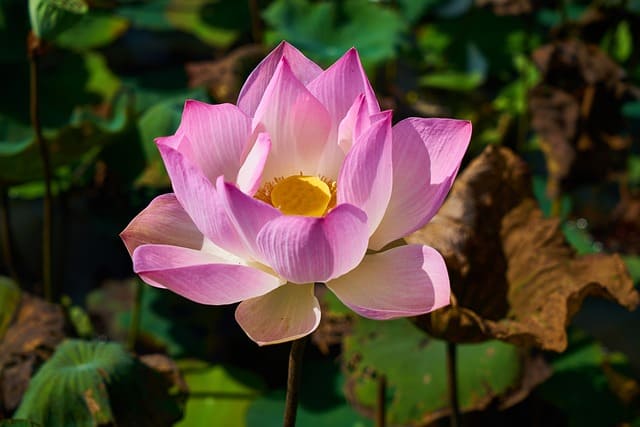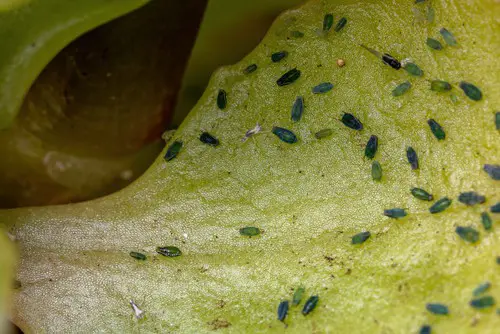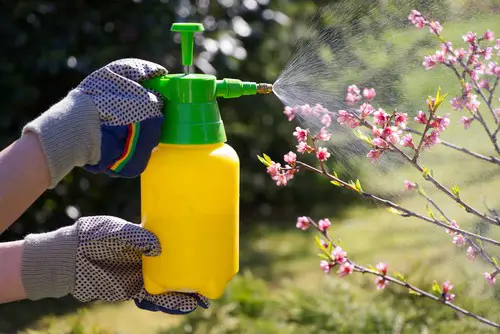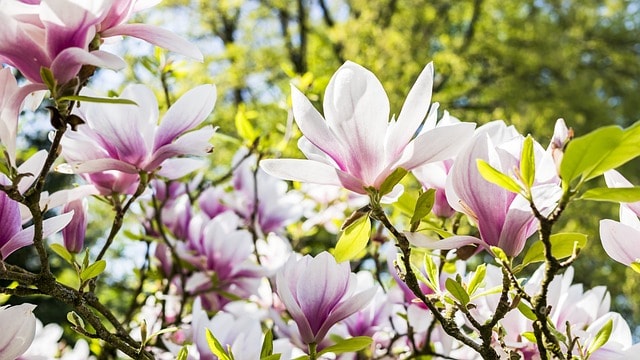Black spots on flower leaves can be a frustrating and unsightly problem for gardeners. These spots can appear on a variety of flowers, including roses, peonies, and dahlias, and are caused by a range of factors, including fungal infections, bacterial infections, and environmental stressors.
While these spots may not always be harmful to the plant’s health, they can detract from its appearance and reduce its vigor.
Understanding the causes of black spots on flower leaves is the first step in preventing and treating this issue. Fungal infections are a common cause of black spots, and can be spread by wet, humid conditions.
Bacterial infections, on the other hand, are often caused by poor plant hygiene, and can be spread by contaminated soil or water. Environmental stressors, such as extreme temperatures or drought, can also cause black spots to appear on flower leaves.
Identifying the cause of black spots on flower leaves is essential for determining the appropriate treatment strategy. Prevention strategies, such as proper plant hygiene and cultural practices, can help reduce the risk of black spot infections.
Treatment options may include fungicides, antibiotics, or other chemical or organic treatments. In some cases, removing infected leaves or plants may be necessary to prevent the spread of the disease.
Key Takeaways
- Black spots on flower leaves can be caused by a range of factors, including fungal and bacterial infections, and environmental stressors.
- Identifying the cause of black spots is essential for determining the appropriate treatment strategy.
- Prevention strategies and treatment options can help reduce the risk of black spot infections and improve the health and appearance of flower plants.
Check out these other popular posts:
Understanding Black Spots on Flower Leaves

Black spots on flower leaves are a common sight in gardens and can be caused by a variety of factors such as fungal or bacterial infections, insect infestations, or environmental stressors. These black spots can appear on the upper or lower sides of the leaves and can range in color from brown to black.
One common cause of black spots on flower leaves is a fungal infection known as black spot fungus. This fungus thrives in warm and humid conditions and can cause circular black or brown spots with fringed margins on the leaves. If left untreated, the fungus can spread to other parts of the plant and cause the leaves to turn yellow and fall off.
Another possible cause of black spots on flower leaves is bacterial leaf spot. This infection can cause small, dark spots on the leaves that may have a red spotting around the edges. Bacterial leaf spot can be spread through water, soil, or infected plant material and can be difficult to control once it takes hold.
Environmental stressors, such as too much or too little water, extreme temperatures, or exposure to chemicals, can also cause black spots to appear on flower leaves. In some cases, the black spots may be a sign of nutrient deficiencies or a reaction to herbicides or pesticides.
It is important to identify the cause of the black spots on flower leaves in order to properly treat and prevent further damage. This may involve removing infected leaves, improving watering and drainage, using fungicides or bactericides, or adjusting environmental conditions.
Regular monitoring and maintenance of plants can help prevent black spots from appearing and keep flowers healthy and vibrant.
Black Spots on Flower Leaves – 5 Common Problems
Black spots on flower leaves can be caused by a variety of factors, including fungal and bacterial infections, pest infestations, nutrient deficiencies, overwatering, and sunburn. Identifying the cause of the black spots is crucial in determining the appropriate treatment.
1. Fungal Infections
Fungal infections are one of the most common causes of black spots on flower leaves. The fungus Diplocarpon rosae, which causes black spot disease, is a common culprit. The disease is characterized by circular black spots with yellow halos on the leaves. T
he fungus can spread rapidly and cause defoliation if left untreated. Other fungal diseases that can cause black spots include powdery mildew and fungal leaf spot.
2. Bacterial Infections
Bacterial infections can also cause black spots on flower leaves. Pseudomonas bacteria can cause black spot disease, which appears as small, dark spots on the leaves. The spots can enlarge and merge together, causing the leaves to turn yellow and drop prematurely.
3. Pest Infestations

Pest infestations can also cause black spots on flower leaves. Spider mites and aphids are common pests that can cause damage to leaves, including the appearance of black spots. These pests feed on the leaves, causing them to become discolored and damaged.
4. Nutrient Deficiencies
Nutrient deficiencies can cause black spots on flower leaves. A lack of nutrients such as nitrogen, phosphorus, and potassium can cause the leaves to turn yellow and develop black spots. Iron deficiency can also cause black spots on leaves.
5. Overwatering and Sunburn
Overwatering and sunburn can also cause black spots on flower leaves. Overwatering can lead to root rot, which can cause the leaves to turn yellow and develop black spots. Sunburn can cause the leaves to become discolored and develop black spots.
Recognizing the Impact of Black Spots
Black spots on flower leaves can be a sign of a serious fungal disease that can weaken and defoliate the plant if left untreated. In this section, we will discuss the effects of black spots on leaves, stems, and flowers.
Effects on Leaves
The initial symptoms of black spots on leaves start as feathery-edged, black spots on lower leaves. As these spots enlarge, the leaves turn yellow and drop off. The disease continues up the stems until the entire plant becomes defoliated. The loss of foliage can weaken the plant and make it more susceptible to other diseases and pests.
Effects on Stems
Black spots can also affect the stems of plants, causing them to weaken and become more susceptible to breakage. The disease can cause stem cankers, which are sunken areas on the stem that can girdle and kill the plant.
Effects on Flowers
Black spots can also affect the flowers of plants, causing them to become discolored and deformed. The spots can merge together and cover the entire flower, making it unattractive and reducing its value as a cut flower.
To prevent the spread of black spots, it is important to promptly remove diseased leaf litter and prune diseased branches six to eight inches below any obvious infections. Pruning should only be done in dry weather, and pruning tools should be disinfected between cuts by dipping them for at least 30 seconds in a 10% bleach solution or alcohol.
Prevention Strategies

Preventing black spots on flower leaves is the best way to avoid dealing with the issue altogether. By taking a few simple steps, gardeners can reduce the risk of black spot fungus infecting their plants.
1. Proper Watering
Proper watering is essential for preventing black spot fungus. Overwatering can lead to the development of fungal diseases, including black spot. Gardeners should water their plants deeply but infrequently, allowing the soil to dry out slightly between watering sessions.
This will prevent the soil from becoming waterlogged, which can lead to the development of fungal diseases.
2. Nutrient Management
Proper nutrient management is also essential for preventing black spot fungus. Plants that receive too much fertilizer are more susceptible to fungal diseases, including black spot. Gardeners should use a slow-release fertilizer and avoid over-fertilizing their plants.
3. Pruning and Air Circulation
Pruning and air circulation are important for preventing black spot fungus. Gardeners should prune their plants regularly to remove any infected leaves or branches. This will prevent the fungus from spreading to other parts of the plant.
Good air circulation is also important for preventing black spot fungus. Gardeners should space their plants properly and avoid planting them too close together. This will allow air to circulate freely around the plants, which will help to prevent the development of fungal diseases.
4. Isolation of Infected Plants
If a plant becomes infected with black spot fungus, it is important to isolate it from other plants. This will prevent the fungus from spreading to other plants in the garden. Gardeners should remove any fallen leaves or branches from infected plants and dispose of them properly.
They should also avoid misting their plants, as this can lead to the development of fungal diseases.
In addition to the above strategies, gardeners can also use bicarbonate of soda to prevent black spot fungus. Bicarbonate of soda is an effective fungicide that can help to prevent the development of fungal diseases.
Gardeners can mix one tablespoon of bicarbonate of soda with one gallon of water and spray it on their plants. This will help to prevent the development of black spot fungus.
Treatment Options

When it comes to treating black spots on flower leaves, there are several options available. This section will discuss organic treatments, commercial treatments, and home remedies.
Organic Treatments
Using organic treatments is a great way to treat black spots on flower leaves without using harsh chemicals. One effective organic treatment is neem oil. Neem oil is a natural pesticide that can be used to treat a variety of pests and infections, including black spots on flower leaves.
To use neem oil, mix it with water according to the instructions on the bottle and spray it on the infected leaves. Another organic treatment is horticultural oil, which can suffocate insects and mites that may be causing the black spots. Horticultural oil can also be mixed with water and sprayed on the infected leaves.
Commercial Treatments
There are several commercial treatments available that can effectively treat black spots on flower leaves. One popular treatment is sulfur, which can be applied as a powder or spray. Sulfur works by inhibiting the growth of the fungus that causes black spots.
Another commercial treatment is a fungicide that contains chlorothalonil. This fungicide can be sprayed on the infected leaves and will prevent the fungus from spreading.
Home Remedies
There are several home remedies that can be used to treat black spots on flower leaves. One effective home remedy is a baking soda solution. To make the solution, mix one tablespoon of baking soda with one gallon of water and spray it on the infected leaves.
Another home remedy is a vinegar solution. Mix equal parts vinegar and water and spray it on the infected leaves. Milk is another home remedy that can be used to treat black spots on flower leaves. Mix one part milk with two parts water and spray it on the infected leaves.
It is important to note that healthy plants are less likely to become infected with black spots. To prevent black spots from appearing on flower leaves, it is important to keep the plants healthy by providing adequate water, fertilization, and sunlight.
Removing infected leaves and debris from the plant and the surrounding area can also help prevent the spread of the fungus. It is also important to disinfect any tools or equipment that may have come into contact with infected plants. Finally, planting resistant varieties of flowers can help prevent black spots from appearing on flower leaves.
Frequently Asked Questions

How to treat black spots on flower leaves?
To treat black spots on flower leaves, it is important to first identify the cause of the problem. Black spots on flower leaves are often caused by a fungal disease, such as black spot fungus.
To treat this, it is recommended to remove any affected leaves and dispose of them in the trash. It is also recommended to avoid overhead watering and to ensure proper air circulation around the plants. Fungicides may also be used to treat the disease.
How to get rid of black spots on flower leaves?
To get rid of black spots on flower leaves, it is important to identify the cause of the problem and take appropriate action. If the black spots are caused by a fungal disease, such as black spot fungus, it is recommended to remove any affected leaves and dispose of them in the trash.
It is also recommended to avoid overhead watering and to ensure proper air circulation around the plants. Fungicides may also be used to treat the disease.
Black spots on flower leaves treatment?
The treatment for black spots on flower leaves depends on the cause of the problem. If the black spots are caused by a fungal disease, such as black spot fungus, it is recommended to remove any affected leaves and dispose of them in the trash.
It is also recommended to avoid overhead watering and to ensure proper air circulation around the plants. Fungicides may also be used to treat the disease.
What are the little black dots on my flower leaves?
The little black dots on flower leaves may be a sign of a fungal disease, such as black spot fungus. These dots can eventually turn into larger black spots. It is important to identify the cause of the problem and take appropriate action to treat it.
How do you fix black spots on leaves?
To fix black spots on leaves, it is important to identify the cause of the problem and take appropriate action. If the black spots are caused by a fungal disease, such as black spot fungus, it is recommended to remove any affected leaves and dispose of them in the trash.
It is also recommended to avoid overhead watering and to ensure proper air circulation around the plants. Fungicides may also be used to treat the disease.
What causes black spots on flowers?
Black spots on flowers are often caused by a fungal disease, such as black spot fungus. This disease can be caused by wet weather, poor air circulation, and overhead watering.
Other causes of black spots on flowers may include insect infestations, nutrient deficiencies, or environmental stress. It is important to identify the cause of the problem and take appropriate action to treat it.

Hey, I’m Lisa and I’ve been an avid gardener for over 30 years. I love writing, talking and living in the garden! Feel free to connect with me on my socials below


